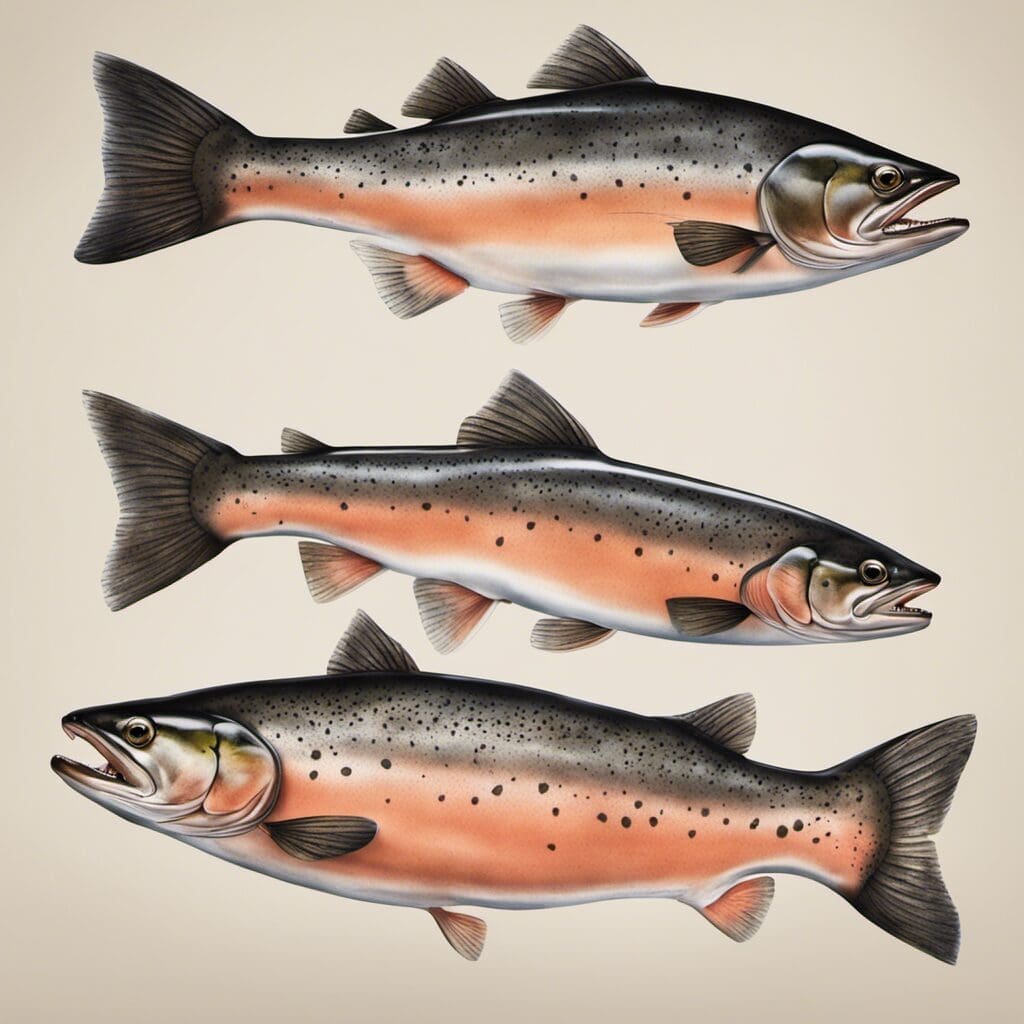Introduction
The Atlantic Salmon, scientifically known as Salmo salar, is a species from the Salmonidae family. Known for their incredible migration patterns, these fish travel across vast oceanic stretches, returning to spawn in the same freshwater area where they hatched.
Conservation Status
The Atlantic Salmon is currently listed as ‘Least Concern’ by the International Union for Conservation of Nature (IUCN), but certain regional populations may be endangered. Conservation efforts focus on restoring and protecting spawning habitats, reducing salmon farming-induced diseases, and minimizing accidental bycatch in professional fishing operations.
Statistics
| Statistic | Average | Range |
|---|---|---|
| Length | 50-75 cm (Adult) | 29-150 cm |
| Weight | 4-10 kg | 2-46 kg |
| Average Lifespan | 4-10 Years |
Distribution
Atlantic Salmon is found in the Atlantic Ocean’s northern regions, from Portugal to Canada. Notable for their long-distance migrations, they typically spend 1-4 years in the ocean before returning to their original spawning grounds in freshwater environments.
Migration Patterns
Atlantic salmon’s migration patterns are one of nature’s miracles. They navigate vast distances from their oceanic feeding grounds back to their hatching rivers to reproduce. Post-spawning, many salmon die, but some make their way back to the ocean, only to return in later years to spawn again.
Habitats
Water Type
Atlantic Salmon are anadromous, meaning they live in both fresh and saltwater. They are born in freshwater rivers, migrate to the open ocean, and return to their birthplace to spawn.
Depth Range
Atlantic Salmon inhabit varying depths in the ocean but are found most frequently around 1-2 meters beneath the surface when in freshwater during the spawning season.
Temperature Range
They are adaptable to a range of temperatures but typically prefer cooler waters between 4°C and 15°C.
When and Where to See
Seasonal Patterns
Atlantic Salmon can be seen year-round in the ocean. However, they return to freshwater habitats to spawn mainly during late summer and autumn.
Time of Day
Salmon generally tend to be more active and feed during the dawn and dusk periods.
Best Fishing Locations
- River Dee, Scotland
- River Tweed, Scotand
- Restigouche River, New Brunswick, Canada
- River Altantic, Norway
- River Blackwater, Ireland
- River Teno, Finland
- River Orkla, Norway
- St. Mary’s River, Nova Scotia, Canada
- York River, Quebec, Canada
- Big Salmon River, New Brunswick, Canada
General Tips
If specific fishing locations are not known, look for clean, undisturbed rivers with cold water and plenty of food supply (small fish and invertebrates). In saltwater, Atlantic Salmon can often be found in coastal areas or at the mouths of rivers.
As a Catch
Atlantic Salmon are a prized sport fish admired for their fighting spirit when hooked. Successful angling techniques include fly fishing and bait casting. Preferred bait includes small fish, squid, prawns, and flies. The best time to fish for Atlantic Salmon is during their migration to spawn, often in the late summer or autumn.
Identification Guide
Atlantic Salmon are silver-blue to green with a white underbelly and exhibit cross-shaped markings along their body. They have a longer, more streamlined shape than the similar Pacific Salmon and usually show numerous black spots on the gill cover.
Culinary
How to Cook
Atlantic Salmon can be prepared in various ways, including grilling, poaching, roasting or smoked.
Taste Profile
Atlantic salmon has a rich, buttery flavor with a smooth and soft texture.
Nutritional Information
Atlantic Salmon is a nutrient-dense food, high in protein and Omega-3 fatty acids, with significant amounts of vitamins D and B-12.
Additional Information
Behavior
Atlantic Salmon are opportunistic feeders, consuming a broad range of marine organisms like herring, shrimp, and squid. Their mating ritual involves females digging a nesting site (redd) while males compete for spawning rights.
Predators and Threats
The Atlantic Salmon’s primary threats are overfishing, habitat loss due to hydroelectric dams, and interactions with farmed salmon. Their common predators in the ocean are seals, larger fish, and sea birds.
Cultural/ Historical Significance
The Atlantic Salmon holds special cultural significance in various regions. In Celtic mythology, it is revered as a source of wisdom, while among North American tribes, it symbolizes abundance and fertility.
References and Further Reading
For further understanding of Atlantic Salmon, the following sources are recommended:
- Atlantic Salmon Trust – Sapphire: The Blue Heart of our Planet.
- WWF: Atlantic Salmon – Life Cycle, Distribution, Threats, Conservation.
- Fly Fisherman’s guide to Atlantic Salmon.
- The Atlantic Salmon Federation – Improving connectivity in freshwater systems.

